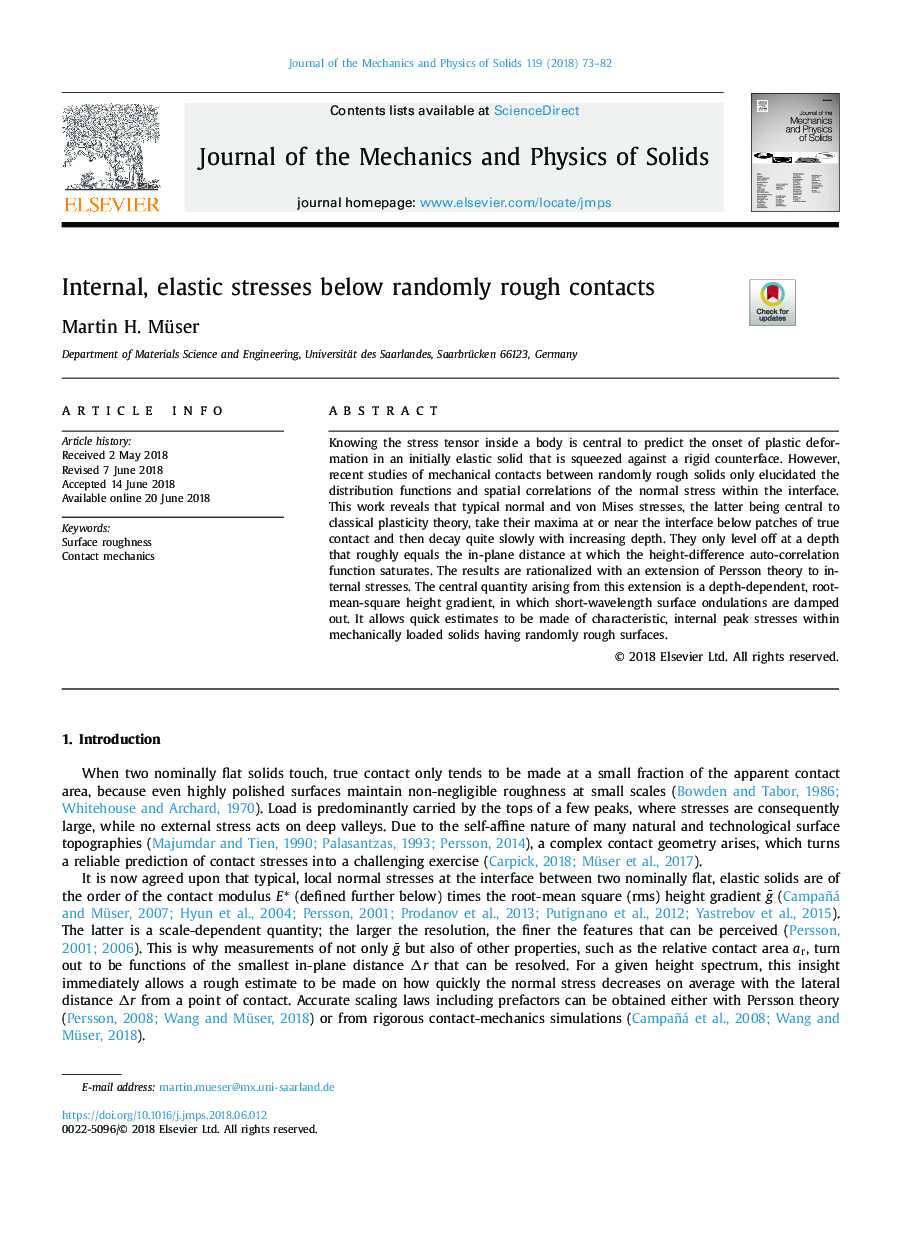| Article ID | Journal | Published Year | Pages | File Type |
|---|---|---|---|---|
| 7177358 | Journal of the Mechanics and Physics of Solids | 2018 | 10 Pages |
Abstract
Knowing the stress tensor inside a body is central to predict the onset of plastic deformation in an initially elastic solid that is squeezed against a rigid counterface. However, recent studies of mechanical contacts between randomly rough solids only elucidated the distribution functions and spatial correlations of the normal stress within the interface. This work reveals that typical normal and von Mises stresses, the latter being central to classical plasticity theory, take their maxima at or near the interface below patches of true contact and then decay quite slowly with increasing depth. They only level off at a depth that roughly equals the in-plane distance at which the height-difference auto-correlation function saturates. The results are rationalized with an extension of Persson theory to internal stresses. The central quantity arising from this extension is a depth-dependent, root-mean-square height gradient, in which short-wavelength surface ondulations are damped out. It allows quick estimates to be made of characteristic, internal peak stresses within mechanically loaded solids having randomly rough surfaces.
Keywords
Related Topics
Physical Sciences and Engineering
Engineering
Mechanical Engineering
Authors
Martin H. Müser,
